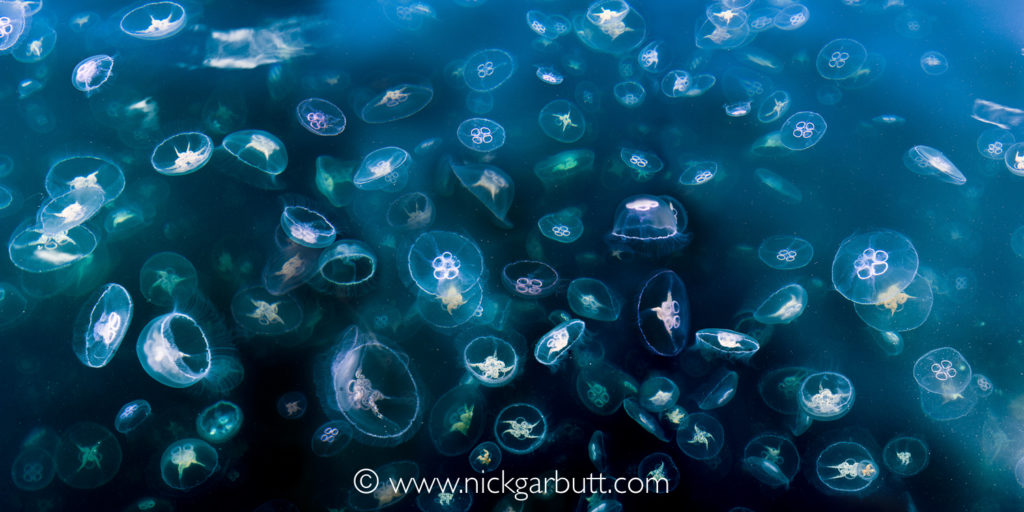Story Behind the Picture: Jellyfish Galaxies
Nikon D3, Nikon 70-200mm @70mm, f8, 1/80 second
The first unusual thing about the day was that it was a calm, not something I was used to on the west coast of the Isle of Mull. The surface of Loch Na Keal was nothing more than a uniform gentle ripple. I was heading out towards the centre of the sea loch to hopefully photograph white-tailed eagles. The boat I was aboard ran commercial trips to showcase these magnificent birds that have been successfully reintroduced to the north west of Scotland (and more latterly other parts of the UK). I’d done these trips several times previously and successfully photographed the eagles as they swooped in to take a bait fish from the water’s surface. But as always with photography there was room for improvement. I wanted better pictures.
The calm conditions seemed perfect. The light was good - bright but slightly overcast - and without any appreciable waves it would be easier to pin point where the bait was floating and so hopefully predict and anticipate where the eagle would swoop towards (it was normally only the male bird that came). There was no guarantee of course that the eagle would cooperate - some days it came to the bait (the nest was away in the woods on the northern shore of the loch) and some days it didn’t.

Resembling floating galaxies in the cosmos as swarm pf moon jellyfish in the waters of Loch Na Keal, off Isle of Mull, NW Scotland.
After more than half an hour of waiting, hopes began to fade. Normally if the eagle was going to make an appearance, it turned up pretty quickly. Nonetheless, we thought it worth our while waiting a little longer. Then the zephyr dropped away completely - not a molecule of air seemed to be moving. The faint ripple vanished to be replaced by a surface resembling plate glass. The water clarity was incredible, with bright shafts of light spearing down several meters. Then from the depths dinner-plate sized discs became apparent, slow ascending towards the surface. For an instant it didn’t register, then the penny dropped. They were jellyfish, thousands of them - moon jellyfish (Aurelia aurita) to be precise. As far as my vision could penetrate into the deep, they were all I could see. The glare and reflections from the water made it challenging to see properly but it was apparent the swarm completely surrounded the boat and extended way beyond areas visible to me.
It then dawned on me the only photo gear I had with me was relevant to the eagles: all telephotos lenses and no wide angles. But this was a spectacle I could not overlook. I had to improvise. The ‘shortest’ lens at my disposal was a 70-200mm f2.8, which I fitted with a polarising filter. As I looked through the viewfinder I gradually rotated the polariser to reach its point of maximum effect. The scene beneath me was breathtaking. The great mass of jellyfish reminded me of the cosmos populated by thousands of distant floating galaxies. I was looking at a scene from outer space, from right here on earth.
Simply taking shots at 70mm did not do the phenomenon justice as the epic scale of the scene was lost. To get around this, I took several overlapping images so I could later ‘stitch’ then together. Obviously, this was far from precise as the boat was moving (albeit slightly) as were the jellyfish. Nonetheless, once back in my office I was able to combine and stitch together three adjacent images to create this final picture.
Oh and by the way, the eagle did not show up that day.
